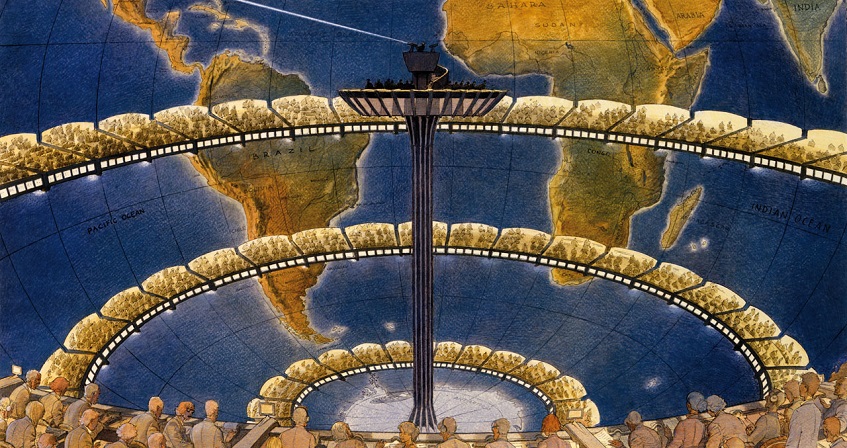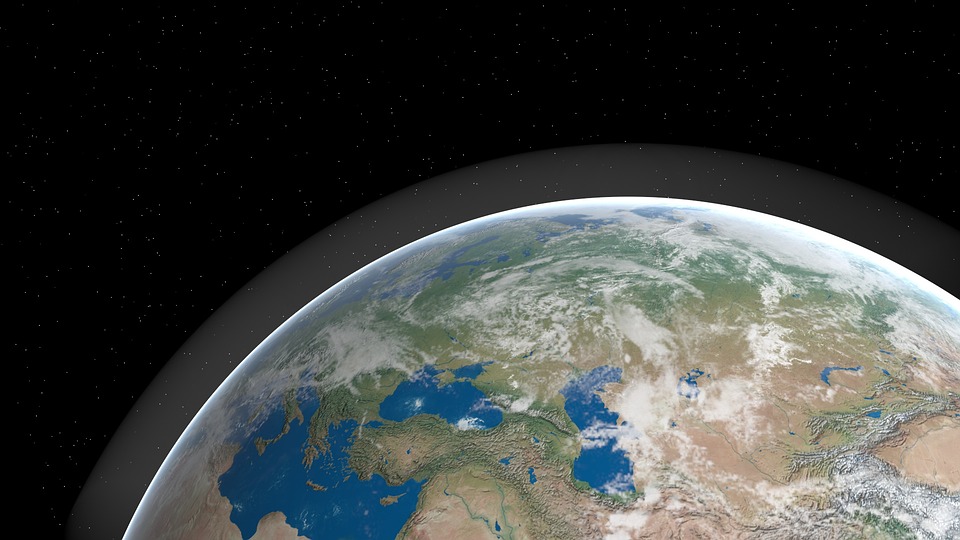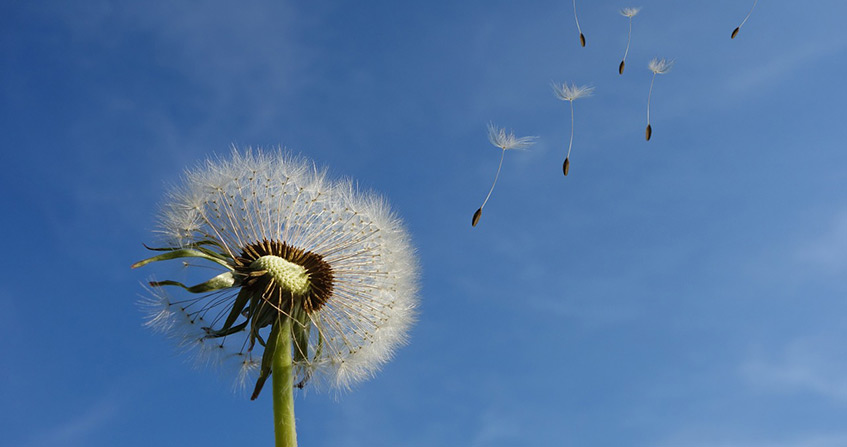Meteorological observations over the past centuries
PDF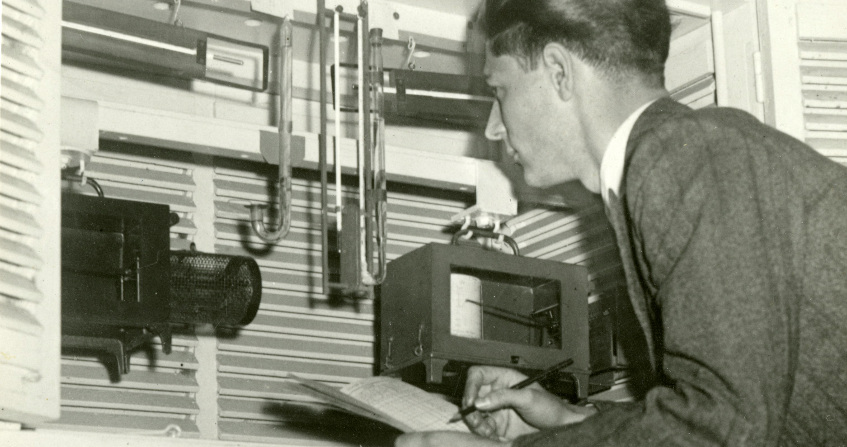
Meteorology has been a constant concern of humankind. The first writings are rich in meteorological descriptions, such as that of the Flood, the most shared myth of all civilizations. In Europe, in the Middle Ages, chroniclers recorded weather events directly (storms, cold, etc.) or indirectly via the date of the grape harvest, for example. However, it was not until the end of the 16th century that the first measuring instruments essential for the scientific description of the state of the atmosphere were developed. The concept of an observation network appeared in the 17th century. The objective is to characterize the earth’s climates on a quantified basis. As early as 1860, the development of the telegraph and, more generally, of transmissions made it possible to consider using meteorological observations to predict the weather. Upper-air weather observations begin in the early 20th century. Their interest increases with progress in forecasting. Since 1960, observations have also been made from satellites. Today, weather observations are archived and stored in databases for use in numerical weather prediction or climate change models.
1. Observations before measurements
1.1. The first writings
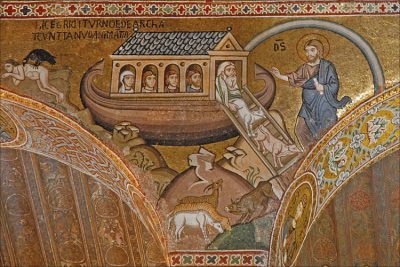
The Chinese have the longest series of weather observations. As early as 1216 BC, there is a trace of text recording meteorological events every ten days. The wind direction is even specified. The Chaldean or Babylonian magicians left descriptions of celestial phenomena on clay tablets. The Greeks, for their part, thought of meteorology as a science and, around 334 BC, Aristotle wrote the first meteorological treatise linking meteorological observations to a physical reality and not to divine action [1].
1.2 In Europe, in the Middle Ages and up to the 17th century
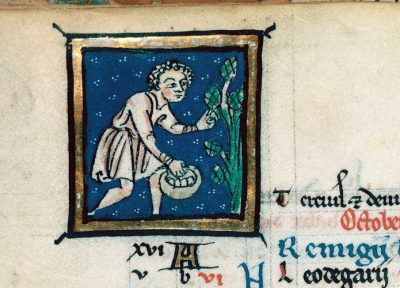
Popular sayings that predict the weather, some of which date back to that time, also testify to man’s ability to observe the sky and to seek to predict its evolution.
2. Observation instruments
Although there is evidence of meteorological instruments long before, most of the instruments needed to measure atmospheric conditions were not developed until the 16th century.
2.1. The barometer
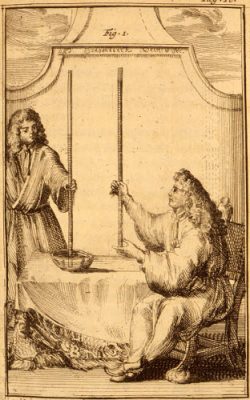
2.2. The thermometer
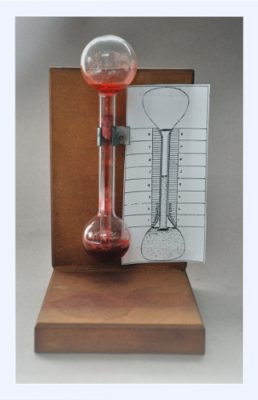
The Italian doctor, Santorio Santorio (1561-1636) used a thermoscope in 1612 to assess a patient’s fever [6]. The Dutchman Cornelis Drebbel describes, in 1621, a thermometer with a basic functioning: a glass balloon, equipped with a long tapered neck that plunges into a container filled with water. The water rises in the tube. When the patient places his hand on the ball; the heat released expands the air in the sphere and lowers the water level to a certain height. Temperature variations can be monitored by repeating the experiment at regular intervals and measuring this height each time [7].
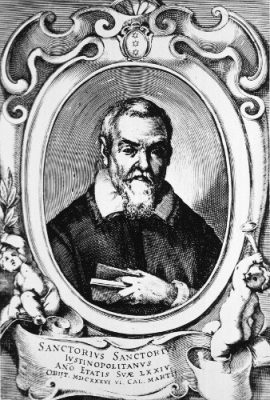
2.3. The hygrometer
Leonardo da Vinci’s Atlanticus codex gathers scientific and technical drawings made between 1478 and 1518. Among them, the weighing device, one of the trays of which carries a sponge and the other a stone, makes it possible to measure the variation in the humidity of the air, since the weight of the sponge varies according to the degree of ambient humidity while, on the other hand, the weight of the stone remains stable. It is one of the ancestors of hygrometers used in meteorology.
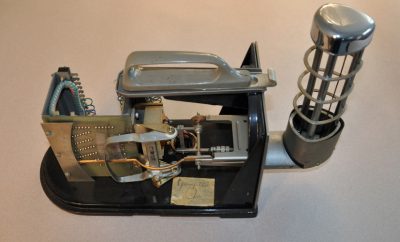
2.4. The anemometer
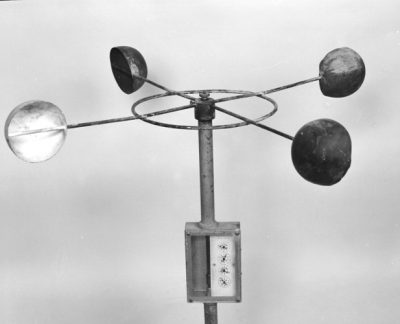
3. Observation networks
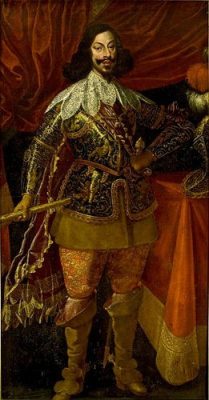
In 1776, in France, the Royal Society of Medicine created a network of meteorological observations to study the link between ambient weather conditions and diseases. Louis Cotte (1740-1815), an Oratorian priest, organized its operation: he listed the instruments to be used, set their installation and maintenance conditions, provided the forms to be completed and organized their collection and archiving. In 1784, the network included seventy-six observatories from all over the world. The Palatinate Meteorological Society in Mannheim, for its part, selected 57 institutions with which it exchanged meteorological observations from 1780 onwards. The French revolution put an end to the functioning of these networks in 1792 but the records collected by Cotte [11] (Figure 9) and by the Palatinate Society [12] have been preserved.
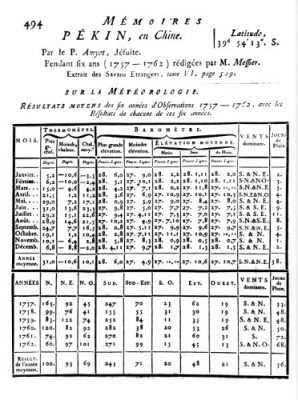
The creation of professional meteorological services provides the different networks with the necessary coherence for the operational use of observations. In France, in 1864, Urbain Le Verrier (1811-1877) used the network of primary teacher training colleges to provide meteorological observation in France. Departmental meteorological commissions were created in 1865. In 1914, they managed a network of more than 2000 volunteer observers (Figure 10).
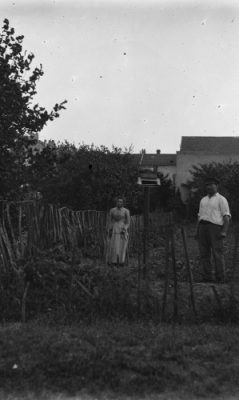
James Pollard Espy (1785-1860) obtained from the American Congress that each county be equipped with a meteorological station including a barometer, thermometers and a rain gauge. These observations enabled him to draw up synoptic maps as early as 1841. However, the Weather Bureau was not created until February 9, 1870.
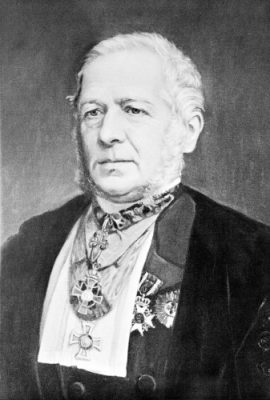
4. Transmission of observation data
In 1851, on the occasion of the London World Fair, the telegraph company displayed a map on which the state of time, wind pressure and direction were displayed at twenty-two points as they were received.
The possibility of quickly exchanging meteorological observations, with telegraph or radio, gives these networks an increased importance because the analysis of observations received a few hours after they have been made makes it possible to predict the weather and no longer only to study the climate.
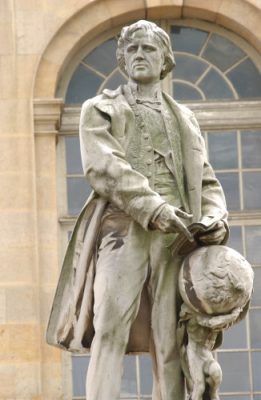
The storm that caused the loss of a large part of the French fleet on November 14, 1854, was indeed predictable, if the appropriate observation network had been available.
The decision to create an international meteorological service with telegraphic transmission of observations was taken in 1856.
On 2 November 1857, a table of meteorological observations was published in the International Bulletin of Paris Observatory.
On September 7, 1863, the first isobaric map of the situation of the previous day in Europe was presented (Figure 13).
Wilhem Brandes (1777-1834) had led the way by illustrating
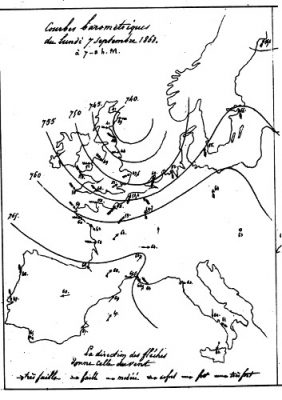
5. Upper air observations
5.1. The balloons probe
In 1898, Léon Teisserenc De Bort (1855-1913) began vertical exploration of the atmosphere using kites and then balloons. In 1899, he highlighted the existence of the stratosphere. But it was with the First World War that the major interest of these observations was recognized and a network of sounding stations was set up.
In 1927, Robert Bureau (1892-1965) and Pierre Idrac (1885-1935) developed the radiosonde, which made it possible to receive on the ground, by radio, the measurements of the instruments carried by the balloon (Figure 14).
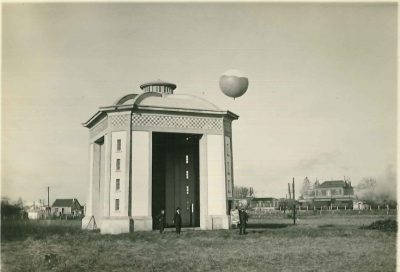
5.2. The satellites
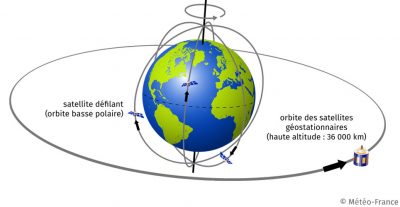
5.3. Radar observations
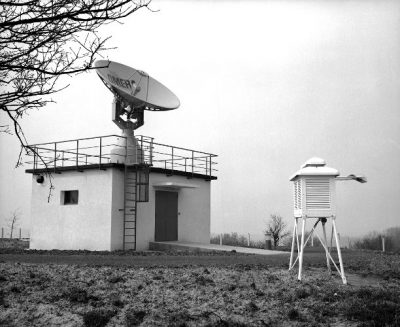
6. Use in weather prediction and climate change models
6.1. Numerical prediction models
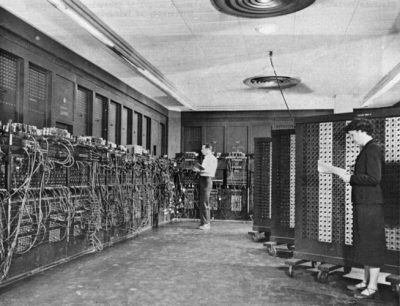
The first set of 24-hour forecasts was published in 1954 by the Weather Bureau. It is based on a human analysis of meteorological observations. In France, it was not until the 1970s and the development of the Amethyst forecast model that numerical prediction, with radiosonde observations as input data, became operational [17]. The forecasts are limited to metropolitan France with a three-hour time horizon [18].
6.2. Climate models
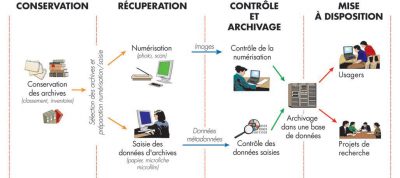
7. Messages to remember
- The arrival of meteorological instruments in the 16th century provided the measurements.
- The establishment of meteorological networks that standardize measurements makes it possible to transform measurements into climatological observations and to compare the Earth’s climates.
- The arrival of the telegraph, which allowed for rapid exchanges of observations, made it possible in the second half of the 19th century to consider forecasting the weather.
- The development of aviation and the resources given to meteorology during the two great wars of the 20th century allowed major advances in the knowledge of the functioning of the atmosphere.
- The development of computing facilities and satellites in the 1970s marked a decisive turning point in the field of meteorological observation and its use to predict the weather and study climate change.
References and notes
Cover image. Meteorological observation in the 1950s. [Source: © Météo-France]
[1] FIERRO A. (1991). History of meteorology. Paris: Denoël
[2] THE ROY LADURIE E. (1967) History of climate since the year 1000. Paris: Flammarion
[3] LITZENBURGER L. (2015), A City Facing Climate: Metz at the End of the Middle Ages, Nancy: PUN
[4] PASCAL B. (1663) Treatises on the balance of liquors, and the gravity of air mass…Paris: Guillaume Desprez
[5] JAVELLE JP, ROCHAS M., PASTRE C., HONTARREDE M., BEAUREPAIRE M., JACOMY B. (2000), Du baromètre au satellite, Paris : Delachaux & Nestlé
[6] JAVELLE JP, ROCHAS M., PASTRE C., HONTARREDE M., BEAUREPAIRE M., JACOMY B. (2000), Du baromètre au satellite, Paris : Delachaux & Nestlé
[7] RENOW E. (1876), Histoire du thermomètre, Annuaire de la Société météorologique de France, n°24, http://bibliotheque.meteo.fr/exl-php/oaidoc/DOC00028778.html
[8] AVELLE JP, ROCHAS M., PASTRE C., HONTARREDE M., BEAUREPAIRE M., JACOMY B. (2000), Du baromètre au satellite, Paris : Delachaux & Nestlé
[9] JAVELLE JP, ROCHAS M., PASTRE C., HONTARREDE M., BEAUREPAIRE M., JACOMY B. (2000), Du baromètre au satellite, Paris : Delachaux & Nestlé
[10] FIERRO A. (1991). History of Meteorology, Paris: Denoël
[11] COTTE L (1774), Traité de météorologie, Paris: Imprimerie Royale http://gallica.bnf.fr/ark:/12148/bpt6k94863w
[12] SOCIETAS METEOROLOGICA PALATINA (1781-1786), Ephemerides Societatis meteorologicae palatinae, Manheim : Schwan, http://bibliotheque.meteo.fr/exl-php/vue-consult/mf_-_research_advance/ISO0000008104
[13] PARROCHIA D. (1998), Météores – Essay on the sky and the city, Paris:ChampVallon
[14] PARENT OF CHATELET J. (2003), Aramis, the French radar network for precipitation monitoring, La Météorologie, n°40, http://documents.irevues.inist.fr/handle/2042/36263
(1922), Weather prediction by natural process, Cambridge University Press, https://archive.org/details/weatherpredictio00richrich
[15] RICHARDSON LF. (1922), Weather prediction by natural process, Cambridge University Press, https://archive.org/details/weatherpredictio00richrich
[16] ROCHAS M., JAVELLE .-P. (1993), La météorologie : la prévision numérique du temps et du climat, Aubenas : Syros
[17] PAILLEUX J., (2002), Les besoins en observations pour la prévision numérique du temps, La Météorologie, n°39, p29-35, http://documents.irevues.inist.fr/bitstream/handle/2042/36244/meteo_2002_39_29.pdf?sequence=1&isAllowed=y
[18] ROUSSEAU D., LE PHAM H, JUVANON DU VACHAT R. (1995), Vingt-cinq ans de prévision numérique du temps, La Météorologie, n°spécial, p129-134. http://documents.irevues.inist.fr/bitstream/handle/2042/52038/meteo_1995_SP_129.pdf
[19] ,PLANTON S., DUFRESNE J.-L. (2007), Description of a generic organizational chart, Le climat à découvert, p150-153, https:https://books.openedition.org/editionscnrs/11431?lang=en
[20] JOURDAIN S., ROUCAUTE E., DANDIN P., JAVELLE JP, DONET I., MENASSERE S., CENAC N., (2015), Le sauvetage de données climatologiques, La Météorologie, N°89, p47-55
The Encyclopedia of the Environment by the Association des Encyclopédies de l'Environnement et de l'Énergie (www.a3e.fr), contractually linked to the University of Grenoble Alpes and Grenoble INP, and sponsored by the French Academy of Sciences.
To cite this article: PEPIN Marie-Hélène (March 5, 2019), Meteorological observations over the past centuries, Encyclopedia of the Environment, Accessed April 23, 2024 [online ISSN 2555-0950] url : https://www.encyclopedie-environnement.org/en/air-en/meteorological-observations-over-past-centuries/.
The articles in the Encyclopedia of the Environment are made available under the terms of the Creative Commons BY-NC-SA license, which authorizes reproduction subject to: citing the source, not making commercial use of them, sharing identical initial conditions, reproducing at each reuse or distribution the mention of this Creative Commons BY-NC-SA license.





